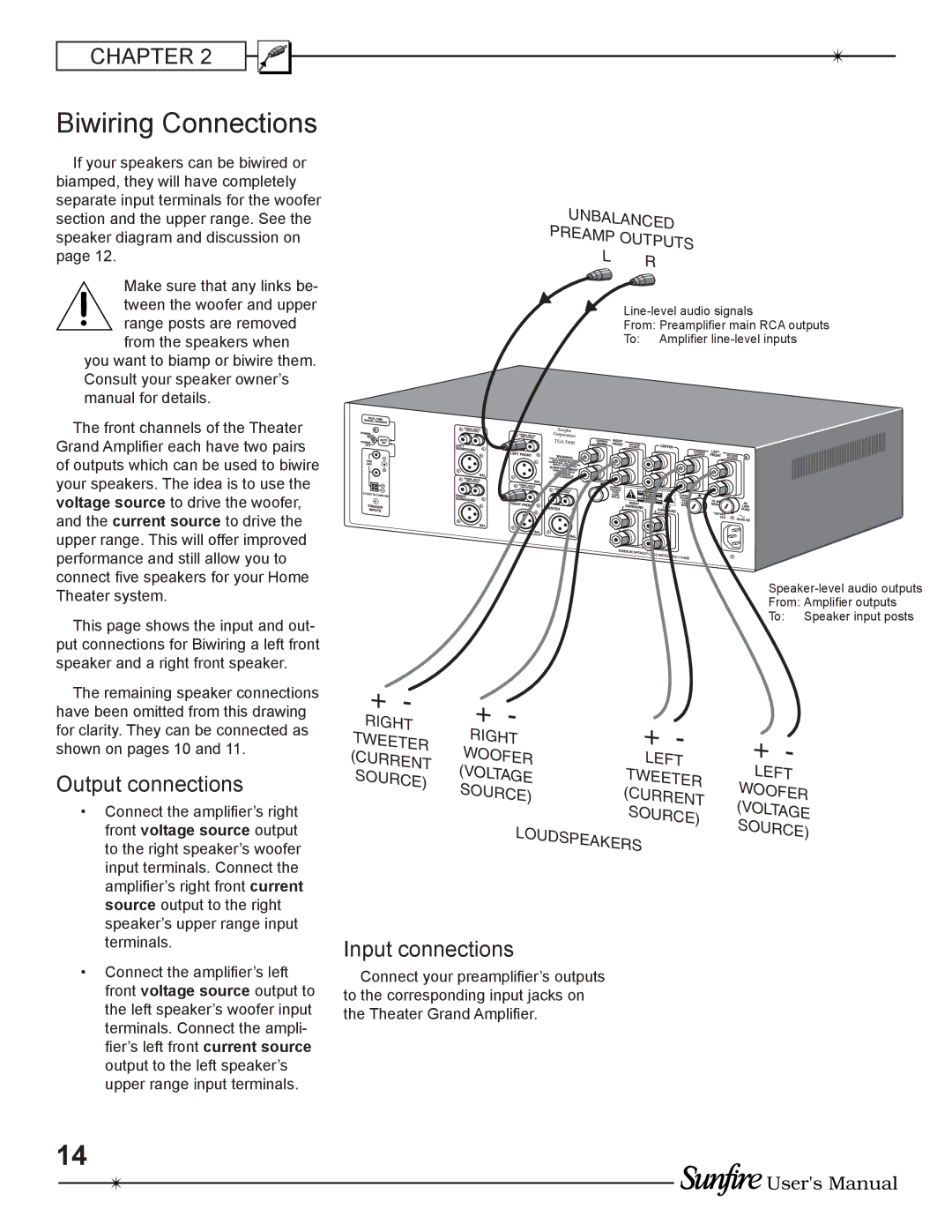
CHAPTER 2
Biwiring Connections
If your speakers can be biwired or biamped, they will have completely separate input terminals for the woofer section and the upper range. See the speaker diagram and discussion on page 12.
Make sure that any links be- tween the woofer and upper
range posts are removed from the speakers when
you want to biamp or biwire them. Consult your speaker owner’s manual for details.
The front channels of the Theater Grand Amplifier each have two pairs of outputs which can be used to biwire your speakers. The idea is to use the voltage source to drive the woofer, and the current source to drive the upper range. This will offer improved performance and still allow you to connect five speakers for your Home Theater system.
This page shows the input and out- put connections for Biwiring a left front speaker and a right front speaker.
The remaining speaker connections have been omitted from this drawing for clarity. They can be connected as shown on pages 10 and 11.
Output connections
•Connect the amplifier’s right front voltage source output to the right speaker’s woofer input terminals. Connect the amplifier’s right front current source output to the right speaker’s upper range input terminals.
•Connect the amplifier’s left front voltage source output to the left speaker’s woofer input terminals. Connect the ampli- fier’s left front current source output to the left speaker’s upper range input terminals.
UNBALANCED
PREAMP OUTPUTS
L | R |
| |
| |
| From: Preamplifier main RCA outputs |
| To: Amplifier |
MINIMUM SPEAKER LOAD
IMPEDANCE 4 OHMS
From: Amplifier outputs
To: Speaker input posts
+ - | + - |
|
|
| |
RIGHT | + | - |
| ||
RIGHT |
| ||||
TWEETER | + - | ||||
WOOFER |
|
| |||
(CURRENT | LEFT | ||||
| |||||
SOURCE) | (VOLTAGE | TWEETER | LEFT | ||
| SOURCE) | (CURRENT | WOOFER | ||
|
| SOURCE) | (VOLTAGE | ||
|
| SOURCE) | |||
| LOUDSPEAKERS |
| |||
|
|
| |||
Input connections
Connect your preamplifier’s outputs to the corresponding input jacks on the Theater Grand Amplifier.
14
![]() User's Manual
User's Manual
